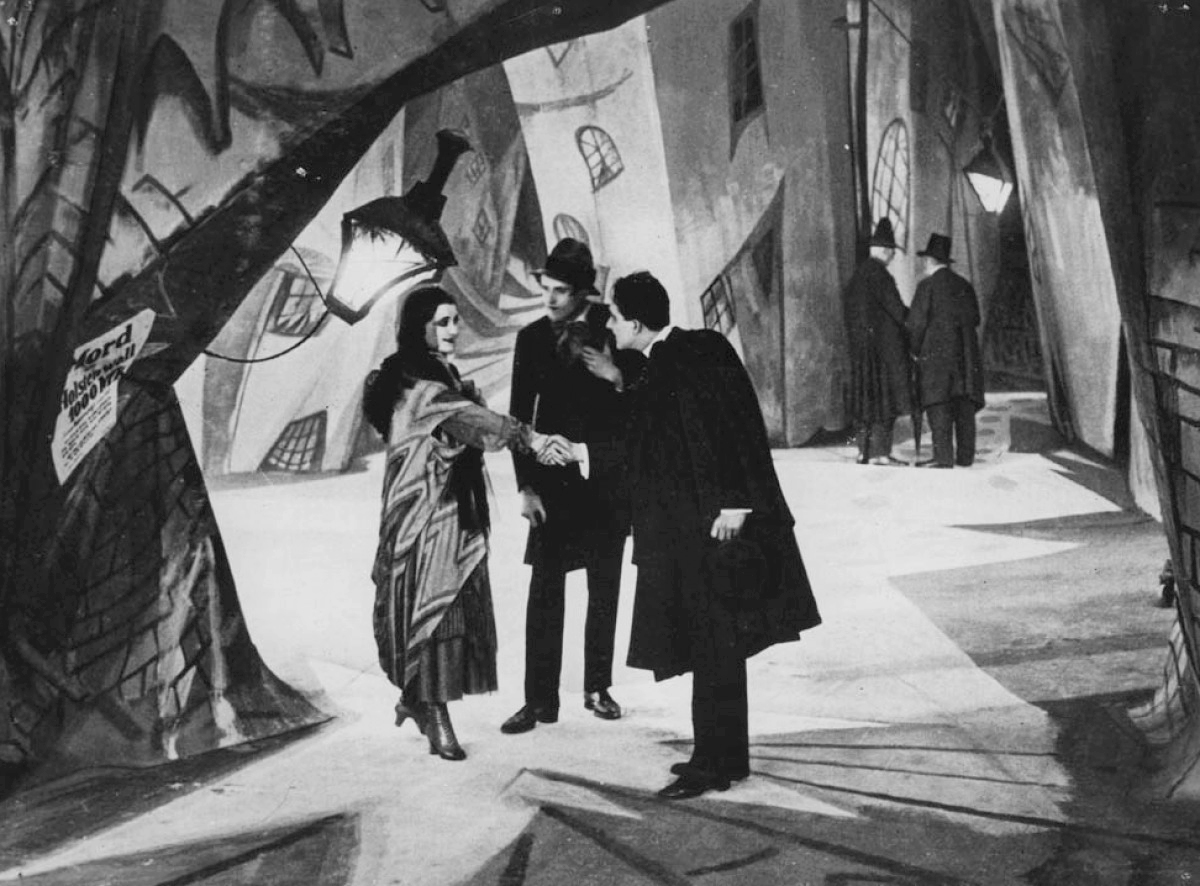Note : this review is a
contribution to The
Silent Cinema blogathon hosted by In
the Good Old Days of Classic Hollywood and Lauren
Champkin.
The Cabinet of Dr.
Caligari (Robert Wiene, 1920)
Dr.
Caligari's somnambulist, Cesare, and his deadly predictions.
The "movement", in Cinema, is often citing Fritz Lang’s Metropolis, F.W. Murnau’s
Nosferatu, and the films of G.W. Pabst. But its influence was primary to Alfred Hitchcock’s early career,
especially when he visited the sets of Murnau’s Faust and leaded to Hitch’s first big success : The Lodger. Another great director was
hugely influenced by German Expressionism; Orson
Welles and his entries in film noir. In fact, the film noir is the heritage
that Hollywood inherited when many German directors flew out of Europe to
escape from the rise of the Nazi party and the coming of the Second World War.
Let’s get back to The Cabinet of Dr. Caligari and get a
perspective of it within this little slice of History. With the peculiar
costumes and decors this bizarre tale of Horror left a permanent mark into
Films. Considered by many scholars as the first Horror movie of all time, it is
a fact that when Cesare (Conrad Veidt)
is shown for the first time on screen some women screamed of terror. Just like The Exorcist and the urban legend of
people passing out during projections it demonstrates how the movie was
efficient and provoked instant memories.
The Cabinet of Dr. Caligari is by all standards a masterpiece and an
essential film. If we had to make a definitive list of film canons Dr. Caligari would be on it. It is also
important to highlight the fact that coming from Germany, it was also some kind
of a metaphor on the fact that this country was frustrated from the defeat and
the penalties from the First World War. Some readings of the film suggest that
Germany was in need for a leader and even a dictator. Looks like Robert Wiene’s film was projecting a near future of autoritarism
in Germany. Well, reality surpassed fiction.
In the same message, Fritz Lang and his series of Dr. Mabuse films was also announcing the
coming of a leader of dictatorial scape. However, on the meanings of the film I
suggest the excellent reading that is Siegfried
Kracauer’s book From Caligari to
Hitler.
As I already mentioned
before, the legacy of Dr. Caligari
goes beyond German boundaries. But it also brought German productions back into
studios and developed and formed all kind of crafts that are behind the camera
from costumes to set designs. Making pre-Second World War German Cinema at the
forefront of the film world. The quality of the productions of this era were
influential on the films to come and have influenced greats like Ingmar Bergman.
As important as Dr. Caligari can be, it is also one of
the most enjoyable silent films. With its unique sets and riveting story, it is
not a deceiver that still holds a strong 100% fresh rating at Rotten Tomatoes
and a 8.1 star on IMDb.com. Silent films are often a hard sell and they may not
please everyone or every crowd but The
Cabinet of Dr. Caligari is a sure entry point and an essential Horror
movie.



No comments:
Post a Comment